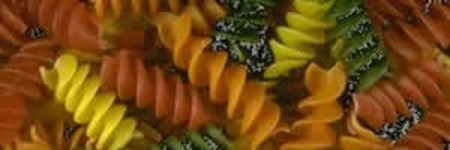Hypoglycaemia diet
DEFINITION
The aim of the diet for Hypoglycaemia is to avoid rapid rises
and plunges in blood sugar levels, while maintaining an adequate
supply of carbohydrate for energy throughout the day.
and plunges in blood sugar levels, while maintaining an adequate
supply of carbohydrate for energy throughout the day.
DESCRIPTION
Hypoglycaemia is not a disease in itself, but is a symptom of
other conditions. Diabetes (particularly insulin-dependent),
alcohol, medications and abnormalities of digestion can all cause
or contribute to Hypoglycaemia. Your Doctor must be consulted for a
proper diagnosis so the underlying cause can be addressed.
other conditions. Diabetes (particularly insulin-dependent),
alcohol, medications and abnormalities of digestion can all cause
or contribute to Hypoglycaemia. Your Doctor must be consulted for a
proper diagnosis so the underlying cause can be addressed.
The symptoms of acute Hypoglycaemia are sweating, nervousness,
tremor, faintness, palpitations and hunger, followed by visual
disturbances, confusion, inappropriate behaviour (which may be
mistaken for intoxication), stupor, seizures and coma.
Hypoglycaemia can cause irreversible brain damage if left
untreated. If symptoms develop, some simple sugars must be ingested
immediately. This may be a tablespoon of sugar or honey or half a
glass of strong cordial (not sugar-free), fruit juice or milk. The
sugar dose must then be followed by a snack of complex
carbohydrates (wholemeal bread is best) to keep the blood sugar
level up and prevent a rebound drop. If the person is confused or
unconscious, emergency medical attention must be obtained
immediately as hospitalisation and intravenous glucose will be
required.
tremor, faintness, palpitations and hunger, followed by visual
disturbances, confusion, inappropriate behaviour (which may be
mistaken for intoxication), stupor, seizures and coma.
Hypoglycaemia can cause irreversible brain damage if left
untreated. If symptoms develop, some simple sugars must be ingested
immediately. This may be a tablespoon of sugar or honey or half a
glass of strong cordial (not sugar-free), fruit juice or milk. The
sugar dose must then be followed by a snack of complex
carbohydrates (wholemeal bread is best) to keep the blood sugar
level up and prevent a rebound drop. If the person is confused or
unconscious, emergency medical attention must be obtained
immediately as hospitalisation and intravenous glucose will be
required.
DIET SHOULD BE HIGH IN
- Complex carbohydrates. These take longer to be digested and
provide a more gradual release of glucose. Wholemeal bread, wheat
products, pasta and potatoes are complex carbohydrates. - Fibre. High-fibre foods slow down the absorption of glucose and
have a more gradual effect on blood sugar levels. Examples are
oats, wholemeal bread, lentils, brown rice, baked beans, fresh
fruit and vegetables. - Protein. The body takes more time to convert protein into
glucose. Sources include animal products (meat, chicken, fish and
eggs) as well as legumes, nuts and seeds.
DIET SHOULD BE LOW IN
- Simple sugars which are rapidly absorbed into the blood stream
and cause a rebound drop in blood sugar levels. Examples are table
sugar, honey, soft drinks, cordial, lollies and fruit juice
(including juice with no added sugar). (Note: Simple sugars are
required immediately if symptoms of Hypoglycaemia occur). - Saturated Fats. A high-fat diet and obesity interferes with
glucose metabolism. Avoid cakes, biscuits, butter, meat fat,
take-away and fried foods. - Alcohol which is high in sugars and can cause Hypoglycaemia.
All beer, wine, liqueurs and spirits must be avoided.
SAMPLE MEAL PLAN
The following diet has been suggested for this
condition.
condition.
BREAKFAST
- One cup cooked rolled oats porridge with milk, or half a cup of
unsweetened muesli with milk or yoghurt, or one egg, boiled or
scrambled with two slices wholemeal toast, or 1/4 cup grated cheese
grilled on two slices rye bread with tomato. - One small piece of fruit. Eat the skin where possible.
- 1 small glass fruit juice or tea or coffee (use sugar
substitute if desired).
MORNING TEA
- Two rice cakes or one toasted bran crumpet.
- Cottage cheese or three teaspoons peanut paste.
- Tea or decaffeinated coffee.
LUNCH
- Two slices of wholemeal bread, or one wholemeal bread roll or
2/3 cup cooked pasta, or brown rice, or three bean mix. - One to two slices lean ham, or 1/4 cup chopped chicken, or 1/2
cup salmon, tuna, or one egg and a thin slice of cheese. - Salad vegetables as desired.
- One small piece of fresh fruit.
AFTERNOON TEA
- 1.3 whole wheat crispbread with one thin slice of cheese and
tomato or avocado. - Tea or decaffeinated coffee.
DINNER
- 90 to 120g lean red meat, chicken, mince, or vegetarian meat
substitute, or 180 – 240g grilled or tinned fish, or two to three
soybean rissoles,or 240g seafood – prawns, crabs, oysters etc. - Half a cup steamed brown rice, or wholemeal pasta, or one small
jacket potato with 1/3 cup kidney beans (use in soup or meat dish
if desired). - Plenty of green vegetables or salad.
- One small piece of fruit or half a cup fresh fruit salad.
SUPPER
- One bran crumpet with a scrape of butter, or two shredded
wheatmeal biscuits. - Tea or decaffeinated coffee.
REMEMBER
- Eat smaller meals frequently through the day. Avoid prolonged
periods of fasting. - Choose textured, unrefined, high fibre foods in preference to
refined, soft or sweetened foods. - Include a small serve of protein and complex carbohydrates at
each meal or snack. - Eat a small piece of fruit at the end of each meal.
- If symptoms of hypoglycaemia occur, ingest simple sugars
immediately (1 tablespoon of sugar or honey, half a glass of strong
cordial, milk or fruit juice) followed by a complex carbohydrate
snack.

